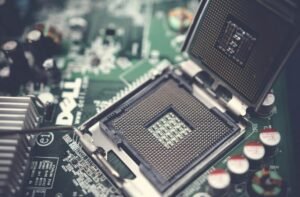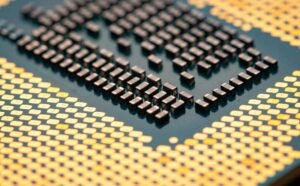Neuralink and Joe Rogan: The Future of Brain-Machine Interfaces
Brain-machine interfaces (BMIs) have been a topic of interest and speculation for many years, but recently it has gained significant attention due to a conversation between Elon Musk and Joe Rogan on the Joe Rogan Experience podcast. Neuralink, a company founded by Musk, aims to develop a high-bandwidth brain-machine interface to enhance human capabilities and potentially address neurological conditions. This article explores the key takeaways from their discussion and provides insights into the potential implications of Neuralink’s advancements.
Key Takeaways
- Neuralink, founded by Elon Musk, aims to develop a brain-machine interface that allows direct communication between human brains and computers.
- The interface could potentially enhance cognitive abilities, improve memory, and enable faster information processing.
- Neuralink’s technology has the potential to revolutionize the treatment of neurological conditions such as paralysis and Alzheimer’s disease.
- The long-term vision includes achieving symbiosis between humans and artificial intelligence.
The Promise of Neuralink
Neuralink’s technology seeks to create a high-bandwidth connection between the human brain and external devices, enabling seamless communication and data transfer. This could open up a world of new possibilities, allowing for enhanced cognitive capabilities and potentially addressing neurological conditions that have previously been difficult to treat. Imagine being able to download information directly to your brain, making learning and acquiring new skills faster and more efficient than ever before.
Current Challenges and Progress
Developing a brain-machine interface is no easy task, and Neuralink faces several challenges. The interface needs to be safe, reliable, and capable of efficiently processing and interpreting neural signals. Musk indicated that Neuralink’s initial focus is on medical applications such as treating paralysis and various brain disorders. However, the ultimate goal is to create a widespread consumer product that seamlessly integrates with everyday life. This ambitious endeavor requires significant scientific advancements and regulatory approvals to ensure safety and efficacy.
The Technical Details
Neuralink’s technology involves implanting tiny, flexible threads into the brain that are connected to a small, implantable computer chip. The threads allow for high-density neural recording and stimulation, while the chip communicates wirelessly with external devices. Musk mentioned that the current prototype can already read and write information at a bandwidth of up to 10,000 neurons. This level of precision and data transfer opens up a world of possibilities for research and potential applications in the future.
| Advantages | Description |
|---|---|
| Enhanced Cognitive Abilities | Neuralink’s interface could potentially improve memory, processing speed, and overall cognitive performance. |
| Treatment of Neurological Conditions | Neuralink’s technology has the potential to revolutionize the treatment of conditions like paralysis and Alzheimer’s disease. |
| Increased Data Processing Efficiency | A direct brain-computer interface could significantly enhance data processing speed and eliminate bottlenecks caused by traditional input methods. |
The Ethical Implications
As with any groundbreaking technology, Neuralink’s advancements raise ethical concerns. Privacy, security, and potential misuse of the technology are key considerations. While the focus of Neuralink’s current efforts is on medical applications, the long-term vision of achieving symbiosis between humans and AI opens up questions about the potential impacts on individual autonomy and the societal implications of merging human and artificial intelligence. Striking the right balance between innovation and ethical responsibility is crucial as we navigate these new frontiers.
| Challenges | Progress |
|---|---|
| Safety and Reliability | Neuralink is working on developing a safe and reliable interface while conducting extensive testing and research. |
| Regulatory Approvals | Neuralink will need to obtain regulatory approvals to ensure the interface’s safety, effectiveness, and compliance with medical standards. |
| Large-scale Manufacturing | Musk highlighted the need for large-scale manufacturing of the devices to bring down costs and make them accessible to a broader audience. |
The Future Possibilities
Neuralink’s mission to revolutionize human-machine interaction presents exciting possibilities for the future. Imagine a world where individuals regain mobility after paralysis, Alzheimer’s patients regain lost memories, and learning becomes an instant process. While the road ahead is challenging, the achievements of Neuralink could reshape how we connect with technology and potentially unlock new levels of human potential. Brace yourself for a future where humans and machines coexist in ways never thought possible.

Common Misconceptions
Neuralink and Joe Rogan
When it comes to Neuralink and its association with Joe Rogan, there are several common misconceptions that people often have. It’s important to clarify these misunderstandings to gain a better understanding of the topic.
- Neuralink is only for enhancing intelligence – While Neuralink is indeed focused on augmenting human intelligence, it also aims to address various other neurological conditions and disabilities.
- Joe Rogan is the founder of Neuralink – Although Joe Rogan has interviewed Elon Musk, the founder of Neuralink, he is not involved in the day-to-day operations or the development of the company.
- Neuralink is a brain-computer interface for mind control – While Neuralink does involve the connection of computer interfaces to the brain, its primary goal is to enhance human cognitive abilities and improve quality of life, rather than manipulating or controlling minds.
Another common misconception is that Neuralink is a recent development. However, it’s worth noting that the company was actually founded in 2016, and since then, it has made significant advancements in the field of neural technology.
- Neuralink may eventually allow us to upload knowledge directly to our brains – While Neuralink’s objective is to enhance our cognitive abilities, it currently focuses on the input and output of information, rather than downloading knowledge directly. Such technology is still speculative at this stage.
- Neuralink poses serious ethical concerns – While it’s crucial to consider the ethical implications of any emerging technology, Neuralink’s mission is primarily oriented towards improving human health and well-being. The company is committed to ensuring safety and pursuing regulatory standards for their devices.
- Neuralink targets only the ultra-rich – While the cost of Neuralink implants may be out of reach for many individuals currently, the company’s long-term goal is to make the technology more affordable and accessible to a wider population, including those in need of medical intervention.
In conclusion, it is essential to dispel common misconceptions surrounding Neuralink and its association with Joe Rogan. By understanding the actual objectives and developments of Neuralink, we can better appreciate the potential impact it may have on human life and healthcare.

Introduction
Neuralink, the brain-machine interface company founded by Elon Musk, has been making headlines since its inception. The potential of this technology to revolutionize our understanding of the human brain and enhance our cognitive abilities is truly fascinating. In this article, we will explore ten interesting aspects of Neuralink’s work, as discussed on the Joe Rogan podcast.
Table 1: Neuralink Implant Improvements
During the podcast, Neuralink’s advancements in brain implants were discussed. The table below highlights key improvements made in their implant technology compared to traditional methods.
| Implant Feature | Traditional Methods | Neuralink’s Technology |
|---|---|---|
| Size | Bulky | Small and sleek |
| Flexibility | Stiff | Highly flexible |
| Electrodes | Limited number | High electrode count |
| Implantation | Invasive surgery | Minimally invasive procedure |
Table 2: Neuron Recording and Stimulation
Neuralink’s ability to record and stimulate brain cells is crucial for understanding brain activity and developing therapeutic interventions. Here’s a comparison of regular neural recording and Neuralink’s advancements.
| Recording/Stimulation Method | Regular Neural Recording | Neuralink’s Advancements |
|---|---|---|
| Number of Neurons Recorded | Several | Thousands |
| Resolution | Coarse | High-resolution |
| Stimulation Precision | Low | Precision targeting |
Table 3: Brain Interface Applications
Neuralink’s brain-machine interface has vast potential applications beyond medical use. The table below showcases a selection of potential applications discussed during the podcast.
| Application | Potential Benefits |
|---|---|
| Medical Research | Deeper understanding of neurological disorders |
| Neurorehabilitation | Restoration of motor functions |
| Enhanced Learning | Accelerated acquisition of new skills |
| Artificial Intelligence | Direct brain-computer interactions |
Table 4: Wireless Communication
Neuralink’s wireless communication capabilities pave the way for seamless integration with external devices. The table below highlights the advantages of their wireless technology.
| Wireless Features | Benefits |
|---|---|
| High Bandwidth | Efficient and fast data transfer |
| Low Latency | Near real-time communication |
| Long-Range | Connectivity over extended distances |
Table 5: Neuralink Animal Testing
Neuralink has conducted tests on animals to demonstrate the effectiveness of their technology. The table below provides examples of such tests and their outcomes.
| Animal Subject | Test Objective | Outcome |
|---|---|---|
| Pig | Implant functionality assessment | Successful long-term implants |
| Monkey | Dexterity improvement through brain control | Significant enhancement observed |
| Rat | Memory restoration experiments | Positive results in memory retrieval |
Table 6: Neuralink Human Trials
Neuralink is planning to conduct human trials in the future to test the safety and efficacy of their brain implants. Here are some considerations to ensure the success of these trials.
| Human Trial Aspects | Key Considerations |
|---|---|
| Informed Consent | Ensuring participants fully understand the risks |
| Ethical Approvals | Strict adherence to ethical guidelines |
| Long-Term Monitoring | Continued assessment of implant performance and effects |
Table 7: Neuralink Potential Risks
Despite its potential, Neuralink also carries certain risks. It is crucial to address and mitigate these risks. The table below presents some potential risks associated with Neuralink’s technology.
| Potential Risk | Mitigation Strategies |
|---|---|
| Implant Infection | Strict sterilization protocols |
| Brain Tissue Damage | Continuous monitoring and adaptive designs |
| Data Security and Privacy | Robust encryption measures |
Table 8: Neuralink Future Developments
Neuralink envisions exciting prospects for the future. Here are a few of their anticipated developments and potential milestones.
| Development/Milestone | Description |
|---|---|
| Non-Invasive Interface | Creating interfaces without surgical implantation |
| Consciousness Transfer | Exploring the possibility of transferring consciousness |
| Direct Mind-to-Mind Communication | Enabling communication between individuals through Neuralink |
Table 9: NeuraLink and Elon Musk
Neuralink’s association with Elon Musk has garnered considerable attention. Here are some lesser-known facts about their relationship.
| Fact | Description |
|---|---|
| Financial Support | Elon Musk has personally funded Neuralink |
| Shared Vision | Musk has a strong belief in the potential of brain-machine interfaces |
| Integrated Testing | Musk plans to be one of the first Neuralink recipients |
Table 10: Neuralink and Public Perception
Public opinion surrounding Neuralink can greatly impact its progress and acceptance. Here’s a summary of how Neuralink’s ventures are perceived by various demographics.
| Demographic | Perception |
|---|---|
| Scientific Community | Excitement and anticipation for breakthroughs |
| General Public | Cautious optimism mixed with curiosity |
| Ethical Experts | Concerns regarding privacy and long-term effects |
Conclusion
The Joe Rogan podcast provided valuable insights into Neuralink, showcasing the remarkable advancements made in brain-machine interface technology. As Neuralink continues to push the boundaries of neural interfaces, addressing the risks and ensuring ethical considerations remain at the forefront will be essential. The future possibilities for enhancing medical research, neurorehabilitation, and even merging with artificial intelligence are truly intriguing. With further research, development, and careful consideration of the ethical and societal implications, Neuralink has the potential to revolutionize the human experience and our understanding of the mind.
Frequently Asked Questions
What is Neuralink?
Neuralink is a neurotechnology company co-founded by Elon Musk aiming to develop implantable brain–machine interfaces (BMIs). It is designed to help people with various neurological conditions and potentially augment human capabilities.
How does Neuralink work?
Neuralink uses ultra-thin electrodes, known as threads, that are implanted into the brain to detect and record neural activity. These threads are connected to a small implant, known as the Link, which processes and wirelessly transmits the data to an external device for analysis.
What are the potential applications of Neuralink?
Neuralink’s technology has the potential to revolutionize healthcare by treating neurological conditions such as paralysis, epilepsy, and depression. It could also pave the way for cognitive enhancements, allowing individuals to interact directly with computers or even enhance their mental abilities.
Is Neuralink safe?
Neuralink is developing its technology with a focus on safety. The threads used in the implant are designed to be thin and minimally invasive, reducing the risk of damage to brain tissue. The company is also actively conducting research to ensure the technology’s safety and efficacy.
Is Neuralink reversible?
Neuralink’s implant is designed to be reversible. The threads can be removed if necessary, and the implantation process does not cause irreversible damage to the brain. However, it is important to note that the long-term effects of having the implant remain unknown.
How does Neuralink relate to Joe Rogan?
Neuralink gained significant attention when Elon Musk discussed the company’s advancements on Joe Rogan’s podcast. Musk elaborated on the potential capabilities and implications of the technology, sparking widespread interest and discussions surrounding Neuralink.
When will Neuralink be available to the public?
As of now, Neuralink is still in the early stages of development. While the company has started conducting trials on animals and a few human subjects, widespread availability to the public is likely years away. The technology needs to undergo rigorous testing, receive regulatory approvals, and address any potential concerns before becoming widely accessible.
How much will Neuralink cost?
As Neuralink’s technology is still under development, the cost for the implant and associated procedures is not yet known. However, considering the complexity of the technology and the precision required for implantation, it is expected to be a significant investment.
What are the potential risks and drawbacks of Neuralink?
While Neuralink holds promise for enhancing human capabilities and treating neurological conditions, it also raises ethical, privacy, and security concerns. The potential risks include infection, damage to brain tissue during implantation, and the possibility of misuse or unauthorized access to the brain’s data.
Where can I find more information about Neuralink?
You can find more information about Neuralink on their official website (neuralink.com), as well as through various news articles, interviews, and scientific publications discussing the company’s advancements and research.




